On August 28, Nature published online a research paper named “Sperm-Origin Parental Effects on Root Stem Cell Niche Differentiation” by Prof. Sun Mengxiang’s research team at Wuhan University’s College of Life Science. This research has reported that two genes of paternal origin are involved in regulating cell fate decisions in the root stem cell niche.
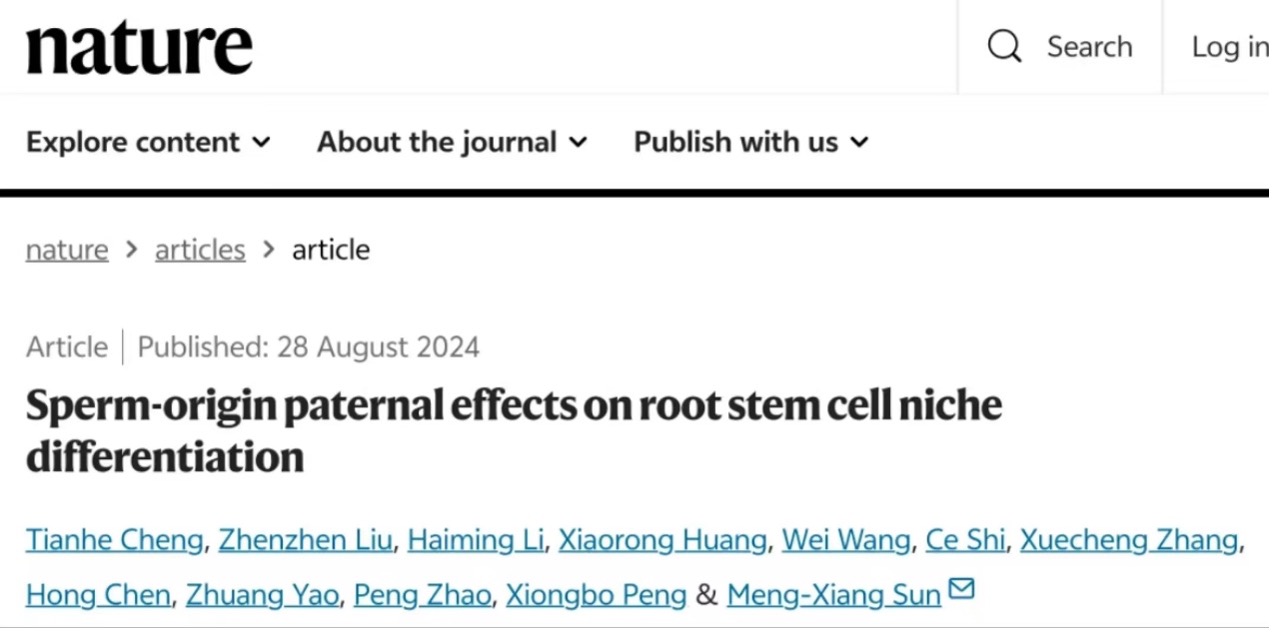
Fertilization initiates embryogenesis by bringing together and integrating parental genetic material through sperm and egg cell fusion to produce a new generation of plant bodies. How parental genes regulate fertilization and post-fertilisation embryo growth and organogenesis has been a fundamental scientific question in developmental biology, which is crucial for the understanding of the regulatory mechanisms of plant development and the molecular mechanisms of crop cross-breeding. However, until recently, there has been little scientific exploration in this area.
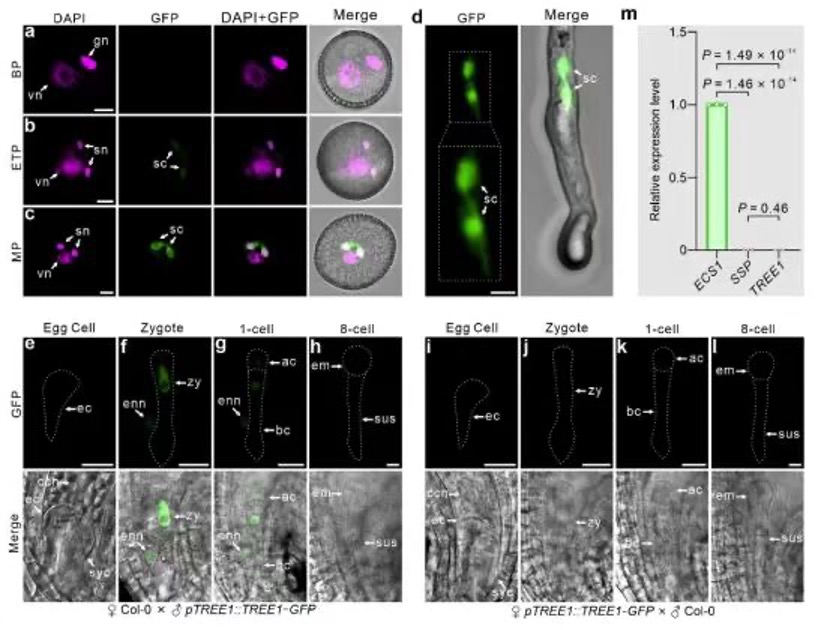
Unlike animals, the sperm and egg cells of plants are buried deep in the maternal tissues, making it difficult to carry out related research. After a long period of exploration, Prof. Sun Mengxiang’s research team created a unique oocyte isolation technique and combined it with single-cell sequencing technology to combine the transcriptome of sperm cells from which two transcriptional processors, TREE1 and DAZ3, which are specifically expressed in sperm cells, were identified.
In this research, the authors confirmed that TREE1 and its homolog DAZ3 are genes of paternal origin. Mutations in TREE1 and DAZ3 resulted in altered developmental fate of embryonic root progenitor cells and abnormal differentiation of the root stem cell niche, resulting in abnormal root development and reduced root reconstruction ability. The authors have found that post-fertilization TREE1 and DAZ3 bind to the promoter of the oocyte-specifically expressed maternal origin gene RKD2’s, repressing its expression in the early embryo to ensure the normal splitting of root cell and the normal growth route of root stem cell niche. After TREE1 and DAZ3 mutation, the repression of RKD2 in the early embryo is lifted, and the fates of embryonic root progenitor cells and room stem cell niches are consequently altered. As a result, the research reveals a specific pathway of male and female gamete molecular interaction during the fertilization process, and explains the molecular mechanism of such pathway’s targeting regulation of embryo’s specific organ formation.
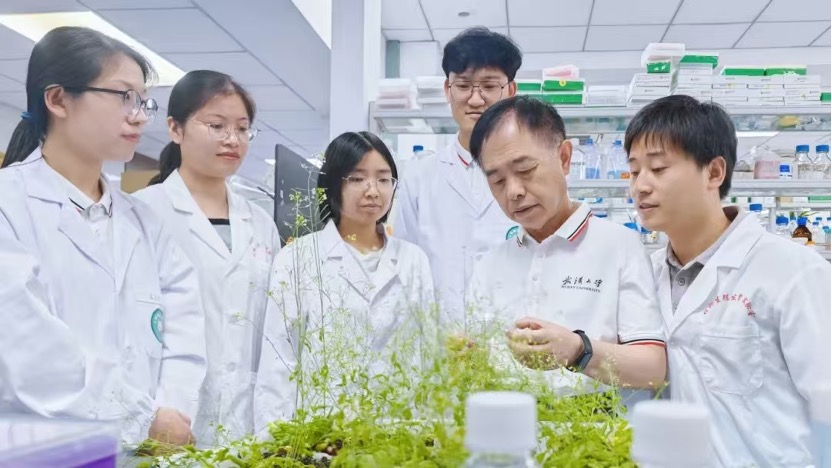
Prof. Sun Mengxiang’s research team conducting research, from left to right are:
Liu Zhenzhen, Zheng Yifan, Chen Hong, Huang Xiaorong, Sun Mengxiang and Cheng Tianhe
This research has clarified several important scientific questions.
Part.01
The research demonstrated that TREE1 and DAZ3, which are expressed only in spermatocytes but not in embryonic root primordia and roots, can regulate root development, thus revealing the existence of an innate regulatory mechanism for postembryonic organogenesis.
Part.02
The research has revealed a new insight of fertilization: fertilization introduces a specific male gene to repress the expression of harmful female gene inside the ovum to avoid its damage to embryo development, ensuring the normal development of the offspring.
Part.03
The finding that a genetic defect in sperm cells can specifically cause abnormal root development reveals an important regulatory role for gamete quality in the formation of specific organs in the offspring that has not yet received much attention.
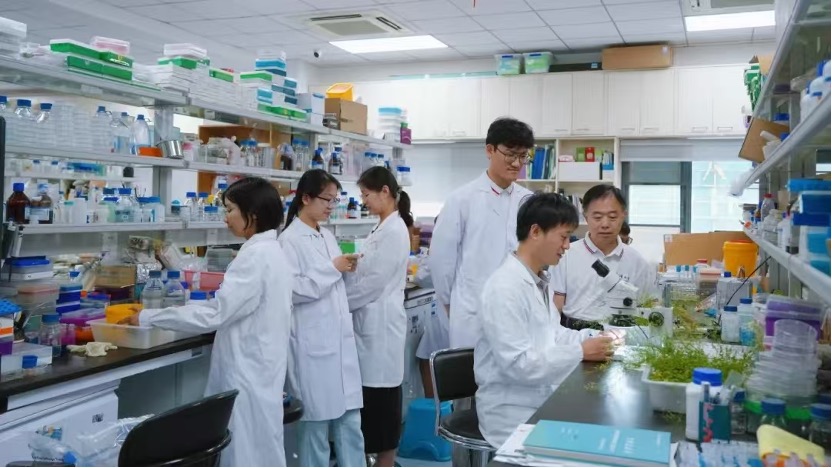
Cheng Tianhe, a postdoctoral fellow of Wuhan University’s College of Life Science, is the paper’s first author, and Prof. Sun Mengxiang is the corresponding author. Wuhan University is the sole author’ affiliation. This research has received funding from the Major Program and the Key Program of the National Natural Science Foundation of China and funding of Postdoctoral Project fund.
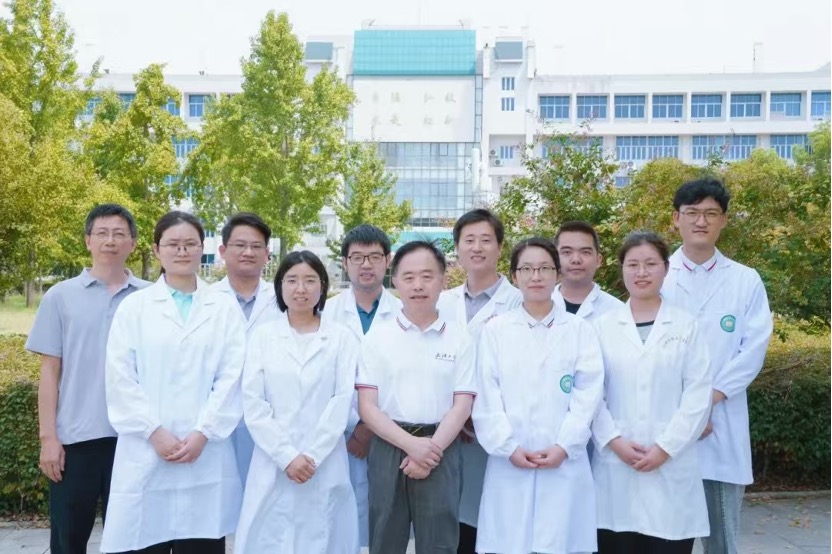
A group photo of Prof. Sun Mengxiang’s research team
Paper web link:
https://www.nature.com/articles/s41586-024-07885-0


